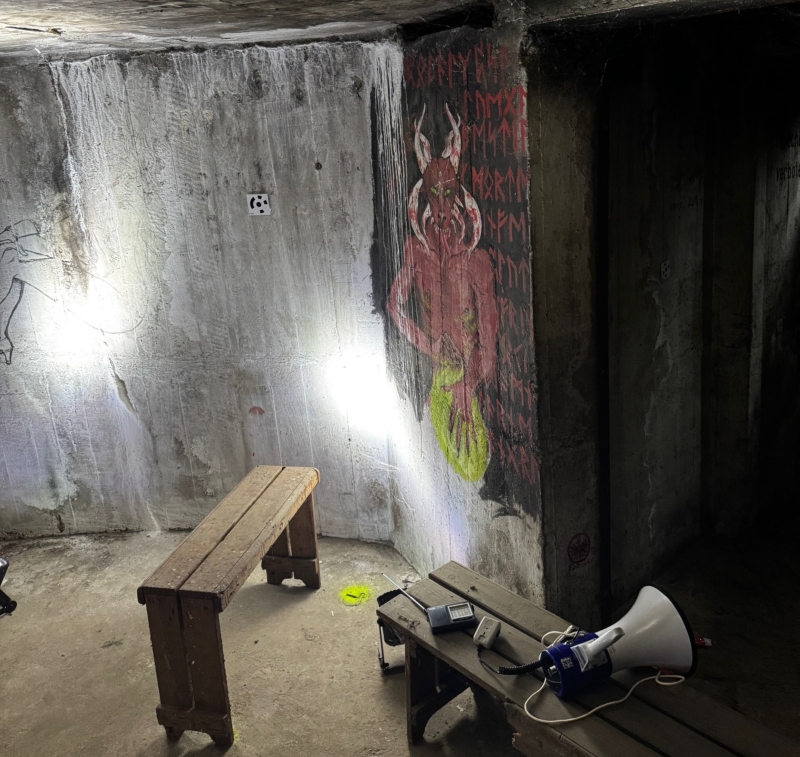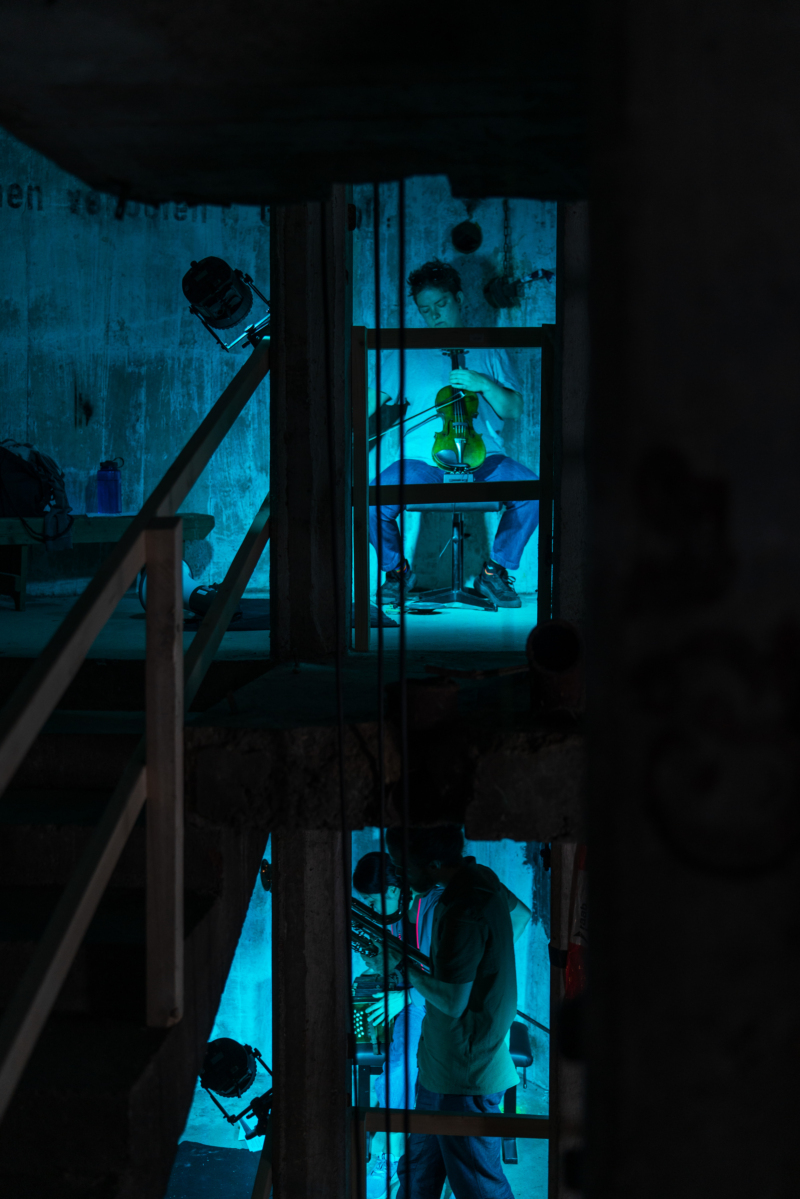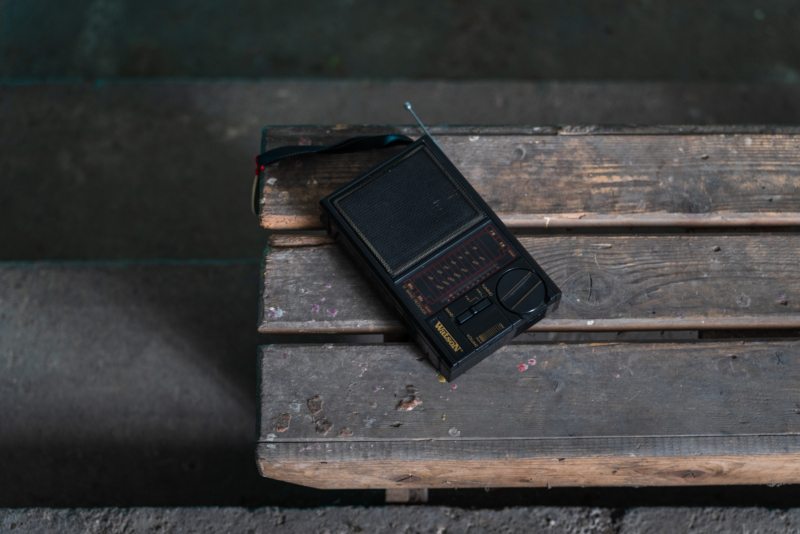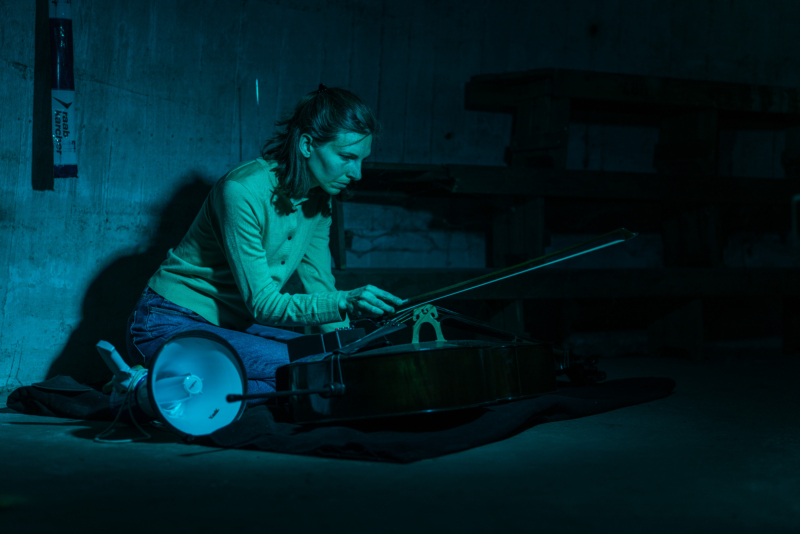READER: MUSIC FOR A CONCRETE STRUCTURE
20./21.07.2025

Arne Gieshoff: music for a concrete structure (2024–25)
World Premiere
Sarah Saviet (Violin)
Paul Hübner (Trumpet)
Trio Catch:
Martin Adámek (Clarinet)
Eva Boesch (Violoncello)
Sun-Young Nam (Piano)
MUSIC FOR A CONCRETE STRUCTURE
Music for a Concrete Structure was developed for one of the four winkel-type high-rise bunkers in darmstadt, located on the former Knell-site (today: Darmstadt waste management services). In a multi-year process, i have been approaching the bunker complex, researching the history of the city and the bunkers, and embarking on sound-archaeological expeditions within the bunker space itself. The site holds various layers of history: aside from its original use as a shelter for employees of the former Reichsbahn, it was also “informally” used by the alternative scene, homeless people, and pigeon protection groups. During the bunker’s development phase, sound pressure experiments were conducted on goats, causing the animals to go deaf. In addition to those who were able and permitted to use the bunkers, under the nazi regime there were groups who were forbidden from seeking refuge in air-raid shelters. This especially affected forced laborers. Forced laborers were also employed by the Reichsbahn in Darmstadt’s railway repair works.
Arne Gieshoff

PRINCIPLES OF QUALITY CONCRETE
If you could look deep into good workable concrete, you would see millions upon millions of pieces of inert material. Each piece, no matter how large or small, is entirely surrounded by a chemically active paste made of Portland cement and water. The aggregate is uniformly distributed. The larger pieces of rock separated by smaller pieces, which are in turn filled in with sand. And finally, sufficient water cement paste fills all the remaining voids. The aggregate occupies about three-fourths of the concrete mass. […] Aggregate must be of the best quality. If you magnify a particle of cement many thousands of times, you will see the water and cement chemically react rapidly at first, then more slowly, until virtually all the cement is combined with the water. This process is called hydration, and continues as long as moisture is present and temperature is favorable. […] Concrete must be water-tight, a quality essential for tanks, for pipes, for dams, for swimming pools, for sea walls and other structures subject to hydrostatic pressure and weathering.
From the video: “Principles of Quality Concrete” by Portland Cement Association
BUNKER ARCHEOLOGY
Phenomena of a dramatic moment in contemporary history, 10,000 monuments disappear. Stripped of their functions, removed from topical contexts, these works bespeak of an unknown meaning. With an archaeological approach, I sought in this underground universe one of the secret figures of our time. The blueprint of the blockhouse is strangely reminiscent of Aztec temples, and its dissimulation recalls the Mastaba, the Etruscan necropolises, but what in the pyramidic or circular form of ancient monuments evoked the sacred symbol, as cosmic image, here is implicit as involuntary. The geometry is no longer affirmative, but eroded, worn. The angle is no longer right, but depressed, resisting apprehension; the mass is no longer anchored in the ground, but centred on itself, independent, capable of movement and articulation. This architecture floats on the surface of an earth which has lost its materiality. Approaching one of these beach monoliths, it suddenly appeared to me almost animal in nature, an empty carcass, abandoned, toppled over into the sand, like the skin of a defunct species. On entering, a particular heaviness oppresses me, the thickness of the walls is tangible, a second physiological envelope, amplifying certain senses and protecting movements. Here there are no windows to light the interior, the embrasure only lights the exterior, but with the precision of a lighthouse. In this survival apparatus, life is not neutral.
Architecture Principe (Claude Parent & Paul Virilio): Bunker Archaeology (1966/1996),
translated by George Collins, Les Editions de l’Imprimeur (Besançon 1997).


I thank the Internationales Music Institute Darmstadt, the Department for Monument Preservation of the City of Darmstadt, the Department for Digital Construction Research at Technical University Darmstadt (Prof. Clemens Brünenberg), EAD Darmstadt and the performers for making this work possible.
Arne Gieshoff
Related Entries
-
Arne Gieshoff
Composition Tutor
-
Sarah Saviet
Violin Tutor
-
Paul Hübner
Trumpet
-
Trio Catch
Ensemble
-
Music for a Concrete Structure
von Arne Gieshoff und Sarah Saviet, 3. Oktober 2024 (Spitzbunker auf der Knell)
-
Music for a Concrete Structure (I)
Sun 20 July 2025 – 18:00
-
Music for a Concrete Structure (II)
Sun 20 July 2025 – 19:30
-
Music for a Concrete Structure (III)
Mon 21 July 2025 – 16:00
-
Music for a Concrete Structure (IV)
Mon 21 July 2025 – 19:30
